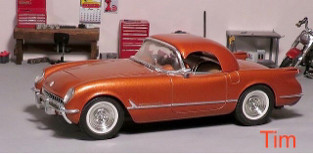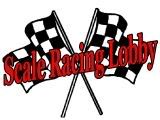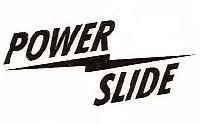Post by vwdave on Sept 30, 2010 9:09:44 GMT -5
I stumbled upon a brush-on acrylic paint at Michael's a while back that just might be the thing for replicating the over-the-top 60's/70's metalflake paint & fiberglass gel-coat finishes.
Here's 4 of the 6 or 7 different colors offered by Plaid in their 'Gems' line(there's also a silver and gold, maybe more):

And here's 2 of them poured in small mixing cups for demonstration purposes:

The paint itself is actually clear with the flakes suspended in it, so a base paint finish of a corresponding metallic color is a must. For the green flake I used a base of Tamiya TS-20 metallic green over TS-14 black, which seems to be the best for me

A couple coats of the flake paint seem to work well, but the first one needs to be quite thin; it has a tendency to pool and run if laid on too thick. If you do goof, like I have a time or two, a mild scrubbing under running water takes all the acrylic off without hurting the Tamiya base paint. The finish comes out quite rough/bumpy after drying, but that can be fixed with what I call an 'obscene amount of clear.' ;D

I lay on a couple coats of a clear acrylic called 'Triple Thick'(also available at Michael's), and top it with a nice wet coat of Tamiya TS-13 clear for good measure.

Here are a couple pics of finished 'flake jobs, and a link to my Fotki 'how to' album. Just like real flake it's hard to photograph, and it looks much better in person.


public.fotki.com/VWDave/how-tos/dune-buggy-approved/
A couple quick caveats for anyone who wants to try this stuff out:
* The acrylic is water-based/water cleanup, which is a good thing for ease of use and cleanup, but it also means NO WETSANDING....don't ask me how I discovered that little tidbit.
* I also wait a day between coats of the acrylics, even though they dry very fast, to prevent surface issues(cracking/sagging, etc.)
Here's 4 of the 6 or 7 different colors offered by Plaid in their 'Gems' line(there's also a silver and gold, maybe more):

And here's 2 of them poured in small mixing cups for demonstration purposes:

The paint itself is actually clear with the flakes suspended in it, so a base paint finish of a corresponding metallic color is a must. For the green flake I used a base of Tamiya TS-20 metallic green over TS-14 black, which seems to be the best for me

A couple coats of the flake paint seem to work well, but the first one needs to be quite thin; it has a tendency to pool and run if laid on too thick. If you do goof, like I have a time or two, a mild scrubbing under running water takes all the acrylic off without hurting the Tamiya base paint. The finish comes out quite rough/bumpy after drying, but that can be fixed with what I call an 'obscene amount of clear.' ;D

I lay on a couple coats of a clear acrylic called 'Triple Thick'(also available at Michael's), and top it with a nice wet coat of Tamiya TS-13 clear for good measure.

Here are a couple pics of finished 'flake jobs, and a link to my Fotki 'how to' album. Just like real flake it's hard to photograph, and it looks much better in person.


public.fotki.com/VWDave/how-tos/dune-buggy-approved/
A couple quick caveats for anyone who wants to try this stuff out:
* The acrylic is water-based/water cleanup, which is a good thing for ease of use and cleanup, but it also means NO WETSANDING....don't ask me how I discovered that little tidbit.

* I also wait a day between coats of the acrylics, even though they dry very fast, to prevent surface issues(cracking/sagging, etc.)










